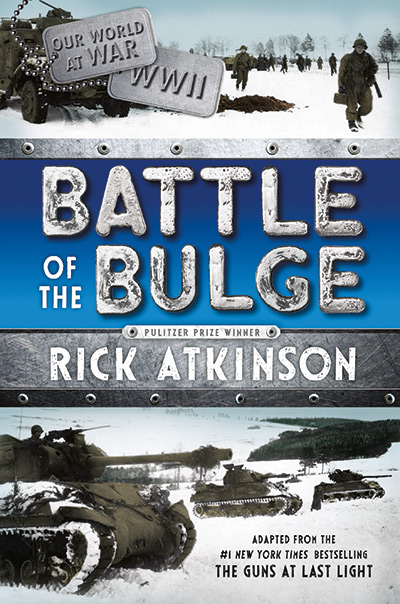Excerpt from Battle of the Bulge
You can download the first chapter of the book as a PDF file, or read below:
THE EUROPEAN THEATER
September 1939–November 1944
This war, which in the end involved sixty-one countries, was sparked in September 1939 by Germany’s invasion of Poland. Germany, under the leadership of Adolf Hitler, was determined to increase its size and resources. It had already absorbed Austria and Czechoslovakia, actions that provoked criticism but not war. Poland, however, was a country allied with most western European countries; therefore, Great Britain and France declared war on Germany.
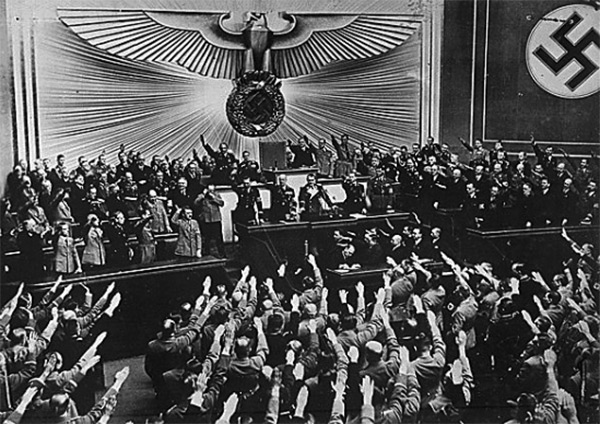
March 1938: Adolf Hitler stands before a crowd at the Reichstag, or parliament, after Austria surrendered to the German army. The arms held up, hands palms down, was a form of salute.
The German march west began soon after. In April 1940, Germany invaded Norway and Denmark, and the following month, Belgium and the Netherlands. As the armies of western Europe assembled and supplied for war, Germany began bombing Britain, in raids known as the Blitz, German for “lightning.” In less than a year, London was bombed seventy-one times, causing massive damage and resulting in the evacuation of hundreds of thousands of children to the countryside.
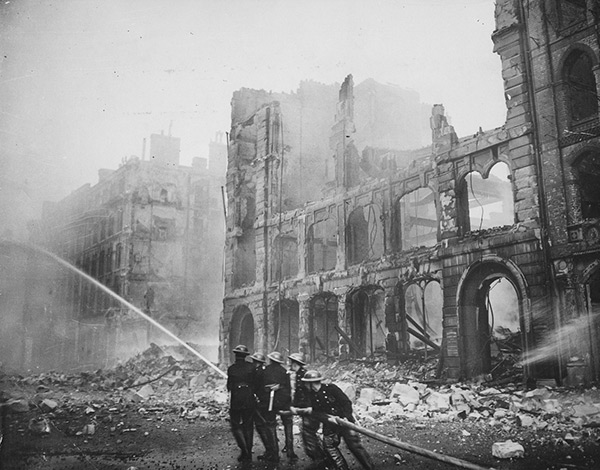
Firefighters in London hose down burning buildings after a German bombing in 1941.
In June 1941, Germany turned the other way and invaded the Soviet Union.
It was the Japanese attack on the U.S. Navy base at Pearl Harbor, Hawaii, in December 1941 that brought the United States into the conflict. Thus the sides were set: the Allied powers, including the United Kingdom, Canada, Australia, China, the Soviet Union, and the United States, against the main Axis powers of Germany, Italy, and Japan.
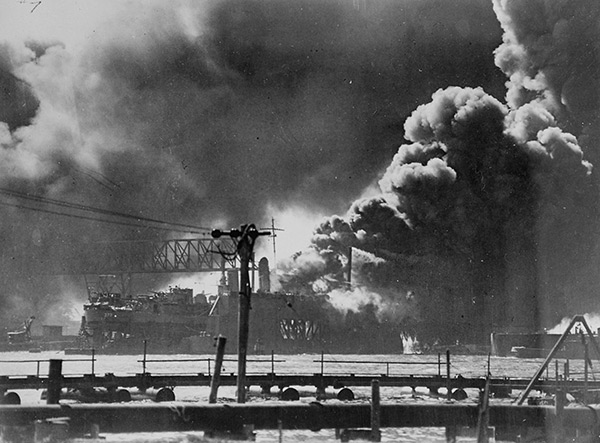
The U.S. destroyer Shaw burns during the Japanese surprise bombing attack on the naval base at Pearl Harbor on the Hawaiian island of Oahu, December 7, 1941.
Both Germany and the United States fought the war on two fronts: for Germany this meant European countries on the Western Front and the Soviet Union on the east. The United States fought on the European front against Germany and on the Pacific front against Japan.
On June 6, 1944, a massive assembly of ships and landing craft delivered 156,000 Allied troops to the beaches of Normandy, France. That intensified the slow, bloody effort to defeat the Germans on land and in the air. Town by town, Allied soldiers made their way across France to the German border. Along the way, they liberated Paris in August 1944, a significant defeat for the Germans and victory for the Allies. Finally, the Germans were driven back almost within their own borders. There, on December 16, 1944, Hitler initiated a last, desperate attack, hoping to retake much of Belgium and throttle the Allies’ supply routes.
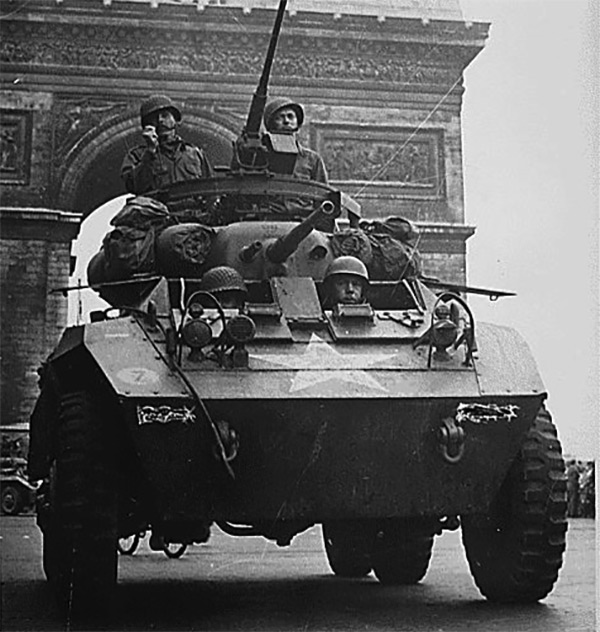
American troops approach the shores of Normandy, France, on D-Day, June 6, 1944.
Each army was hoping to outlast the other—outlast the constant loss of troops while causing the enemy to lose heart and surrender. After this final, savage six-week battle, Hitler faced defeat. This is the story of the worst of war—of savagery, deprivation, despair—but also of astonishing bravery, grit, and fortitude.
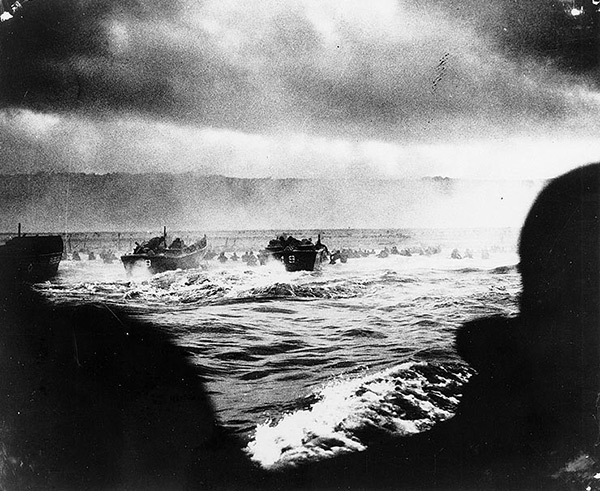
American troops in a tank pass the Arc de Triomphe during the liberation of Paris in August 1944.
Copyright © 2015 by Rick Atkinson

